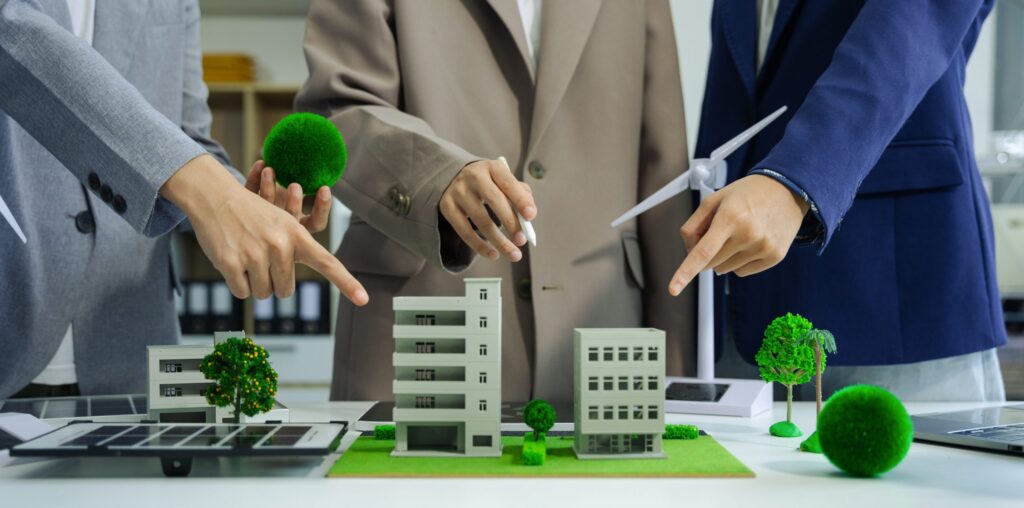The commercial real estate sector is constantly evolving, with a growing focus on sustainability and environmental responsibility. One of the most recognized ways to demonstrate a commitment to sustainability in commercial buildings is through LEED certification. A green building certification not only signifies that a building meets high environmental standards but also serves as a powerful tool to increase the value of commercial real estate.
What is LEED Certification?
LEED, or Leadership in Energy and Environmental Design, is a globally recognized system that certifies buildings based on their environmental performance. Developed by the U.S. Green Building Council (USGBC), LEED certification helps owners and developers assess the sustainability of their buildings by evaluating various aspects such as energy efficiency, water usage, indoor environmental quality, and the overall environmental impact of the construction and operation processes.
Buildings that achieve LEED certification have demonstrated a commitment to reducing their carbon footprint, conserving natural resources, and providing a healthier environment for their occupants. This is done through a rigorous process that includes meeting certain prerequisites and earning points in different categories. These points ultimately determine the level of certification the building will receive—Certified, Silver, Gold, or Platinum.
The Connection Between LEED Certification and Property Value
In the commercial real estate market, the value of a property is influenced by several factors, including its location, size, condition, and the amenities it offers. However, increasingly, tenants, investors, and owners are prioritizing sustainability. As a result, properties with green building certifications are seeing higher demand and, consequently, higher market values. There are several reasons for this.
Tenant Demand for Sustainable Spaces
One of the key drivers behind the increased value of leed-certified commercial properties is the growing demand for sustainable and energy-efficient spaces. As businesses become more conscious of their environmental impact, they are looking for office spaces and commercial buildings that align with their sustainability goals. For many organizations, having a green building certification is not just a preference but a requirement.
A LEED-certified building offers tenants the assurance that their workplace is designed with environmental and health considerations in mind. This can include features such as improved air quality, better lighting, and reduced energy consumption—all of which contribute to a more comfortable and productive working environment. As tenants are increasingly seeking out these types of spaces, buildings with LEED certification attract higher-quality tenants who are willing to pay a premium for these benefits.
Reduced Operating Costs
Another significant factor that can enhance the value of a commercial property with LEED certification is the potential for reduced operating costs. Buildings with green building certification are designed to be energy-efficient and resource-conscious, which translates into lower utility bills for owners and tenants alike. For example, a LEED-certified building might incorporate energy-efficient HVAC systems, advanced insulation, and smart lighting controls, all of which reduce energy consumption.
By operating more efficiently, these buildings help businesses save money on electricity, water, and heating costs. In turn, these savings can make the property more attractive to potential tenants, who are often looking for ways to reduce their operational expenses. Additionally, with the rise of environmental consciousness among tenants, businesses are often willing to pay a premium for spaces that offer lower operating costs and greater energy efficiency.
Enhanced Marketability and Reputation
One of the most significant advantages of obtaining LEED certification for a commercial property is the enhancement of its marketability. In today’s competitive real estate market, a building’s reputation can make or break a sale or lease. A green building certification not only increases the property’s appeal but also positions it as a forward-thinking and socially responsible investment.
Buildings that are LEED-certified are perceived as being of higher quality, more modern, and better equipped to meet the needs of a sustainable future. For developers, this can lead to higher demand for the property and a greater likelihood of attracting investors and tenants who prioritize sustainability. In addition, LEED certification can improve the property’s overall brand image, making it more attractive to eco-conscious companies and individuals who value environmentally friendly practices.
Higher Resale Value
A LEED-certified building typically has a higher resale value compared to its non-certified counterparts. As the demand for sustainable buildings continues to rise, investors are increasingly willing to pay more for commercial properties that offer environmental benefits and lower operational costs. Furthermore, buildings with green building certifications are less likely to face obsolescence in the future as sustainability standards continue to evolve and become more stringent.
When considering the long-term investment potential of a property, investors often place a premium on LEED-certified buildings because they are seen as more future-proof. The value of these buildings is likely to appreciate over time as more companies adopt sustainable practices and as regulations around energy efficiency and sustainability become stricter. For owners looking to sell or lease their properties, LEED certification is an attractive selling point that can help secure higher offers.
Access to Incentives and Tax Benefits
In many regions, commercial property owners can benefit from government incentives and tax breaks for obtaining LEED certification. These incentives can include tax deductions, grants, or other financial benefits that help offset the initial costs of achieving certification. For example, some municipalities offer tax credits to building owners who implement energy-saving measures or use renewable energy sources. These financial incentives can help reduce the upfront costs of pursuing green building certification and increase the overall return on investment for the property.
By obtaining LEED certification, property owners can access these incentives, making it a more cost-effective way to improve the building’s value and attract investors. Moreover, these incentives can further enhance the financial appeal of LEED-certified buildings, increasing their desirability among tenants and buyers.
Long-Term Financial Benefits
While the upfront cost of obtaining LEED certification can be significant, the long-term financial benefits often outweigh these initial expenses. Green building certification helps to future-proof commercial properties by ensuring they meet the highest standards of sustainability. This can result in lower operating costs, reduced maintenance requirements, and a more stable income stream over the long term.
For investors, LEED-certified buildings offer a more stable and predictable return on investment. The energy efficiency and sustainability features of these buildings reduce the likelihood of costly repairs and upgrades in the future, which can eat into profits. In addition, LEED-certified buildings are less likely to become obsolete as building codes and environmental regulations continue to tighten. This can help protect the property’s value and ensure a steady stream of income for the owner.
Positive Environmental Impact
While the financial benefits of leed certification are significant, the positive environmental impact should not be overlooked. A green building certification helps reduce the carbon footprint of a property, decrease waste, and conserve water and energy. This aligns with the global shift toward sustainability and environmental responsibility, which is becoming increasingly important for businesses and governments alike.
Commercial properties that embrace sustainability through leed certification contribute to a healthier and more sustainable environment, which can improve the quality of life for local communities. In this sense, leed-certified buildings are seen as more than just real estate investments—they are a means of creating a positive legacy and making a meaningful contribution to global sustainability efforts.
A Competitive Edge in the Market
In highly competitive markets, standing out from the crowd is crucial. Properties that are LEED-certified gain a competitive edge over their non-certified counterparts. As more businesses prioritize sustainability, commercial properties with green building certification are increasingly in demand. This heightened demand leads to higher occupancy rates and rental income, making LEED-certified buildings a more attractive option for investors and property developers.
Moreover, leed certification can be a deciding factor for tenants when choosing between multiple commercial spaces. Companies looking to lease office space are more likely to choose a leed-certified property, as it reflects their values and helps them achieve their own sustainability goals. This increased tenant interest can result in higher rents and longer lease terms, further boosting the property’s value.
Conclusion
Incorporating sustainability into commercial real estate through LEED certification offers numerous benefits that can increase the value of a property. From attracting high-quality tenants and reducing operating costs to enhancing marketability and securing tax incentives, the advantages of green building certification are clear. As sustainability continues to be a driving force in the commercial real estate market, obtaining LEED certification is no longer just a trend but a smart business decision.
For property owners and investors looking to maximize the value of their real estate, LEED certification is an essential tool that provides both financial and environmental benefits. By embracing sustainable practices and achieving green building certification, commercial real estate professionals can position their properties for long-term success, attract top-tier tenants, and contribute to a more sustainable future.



